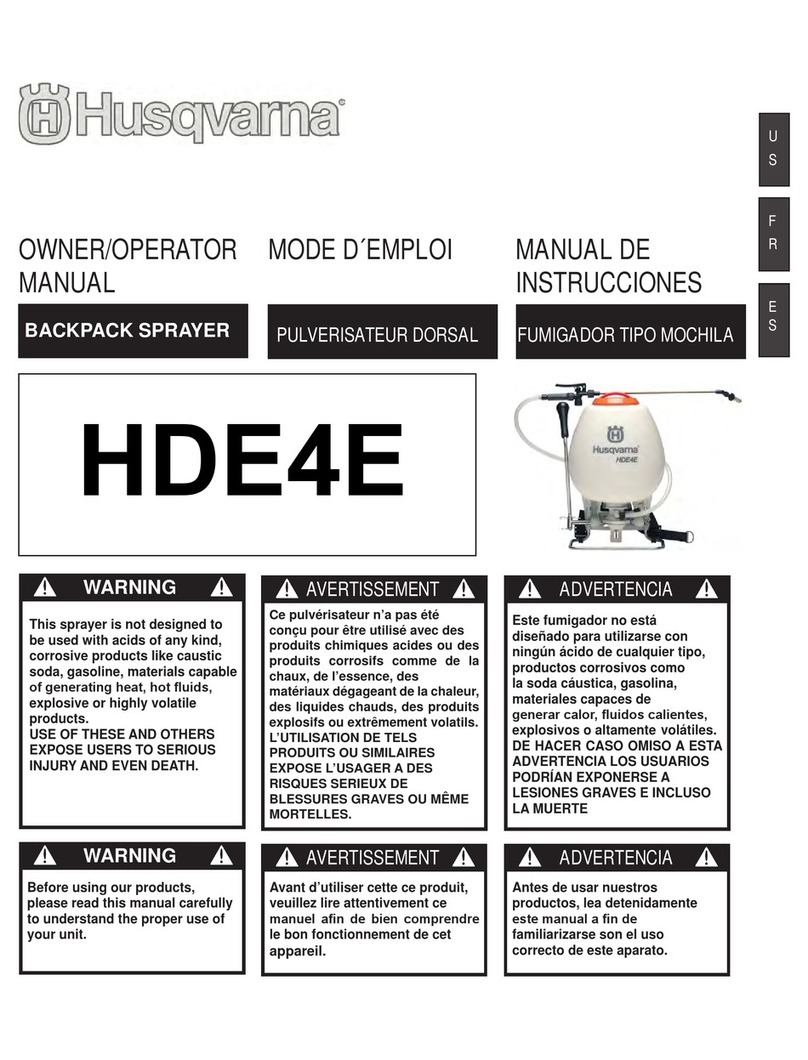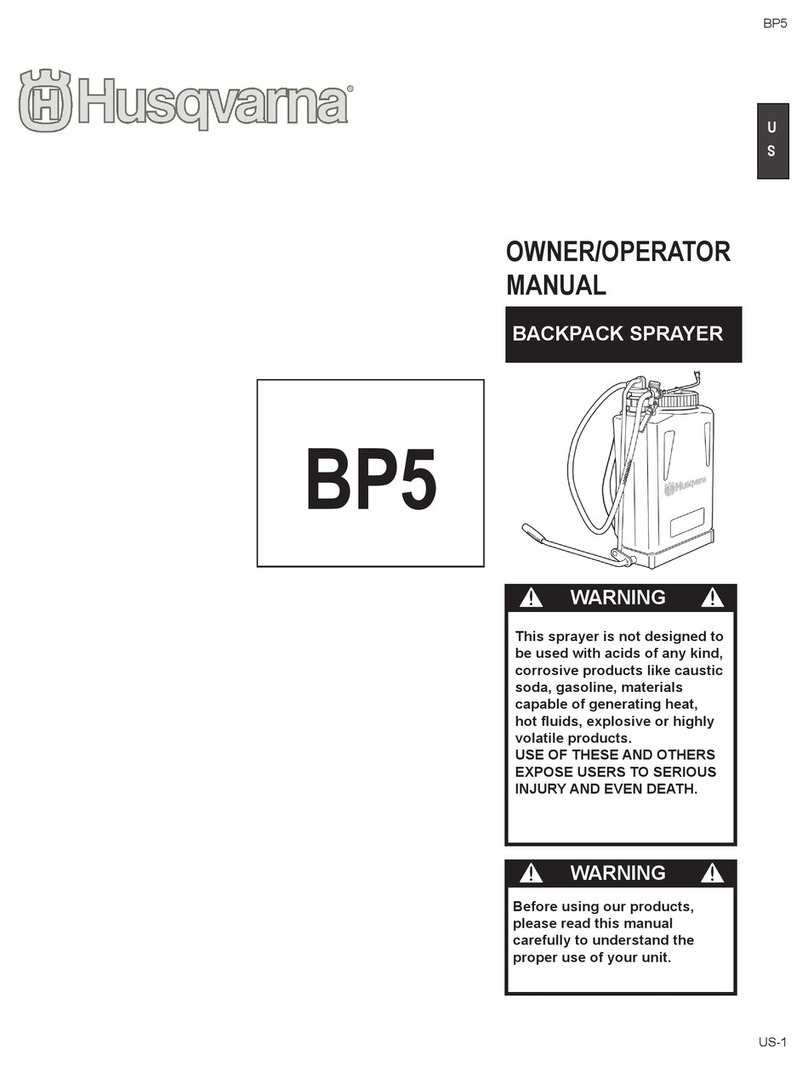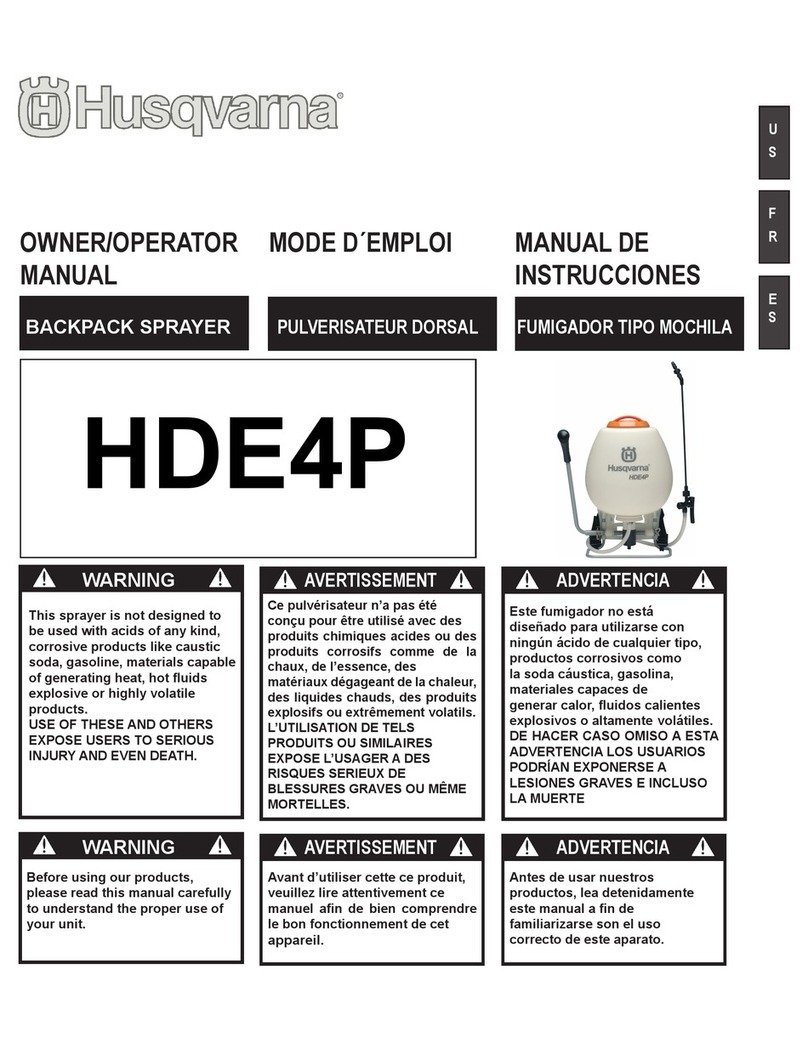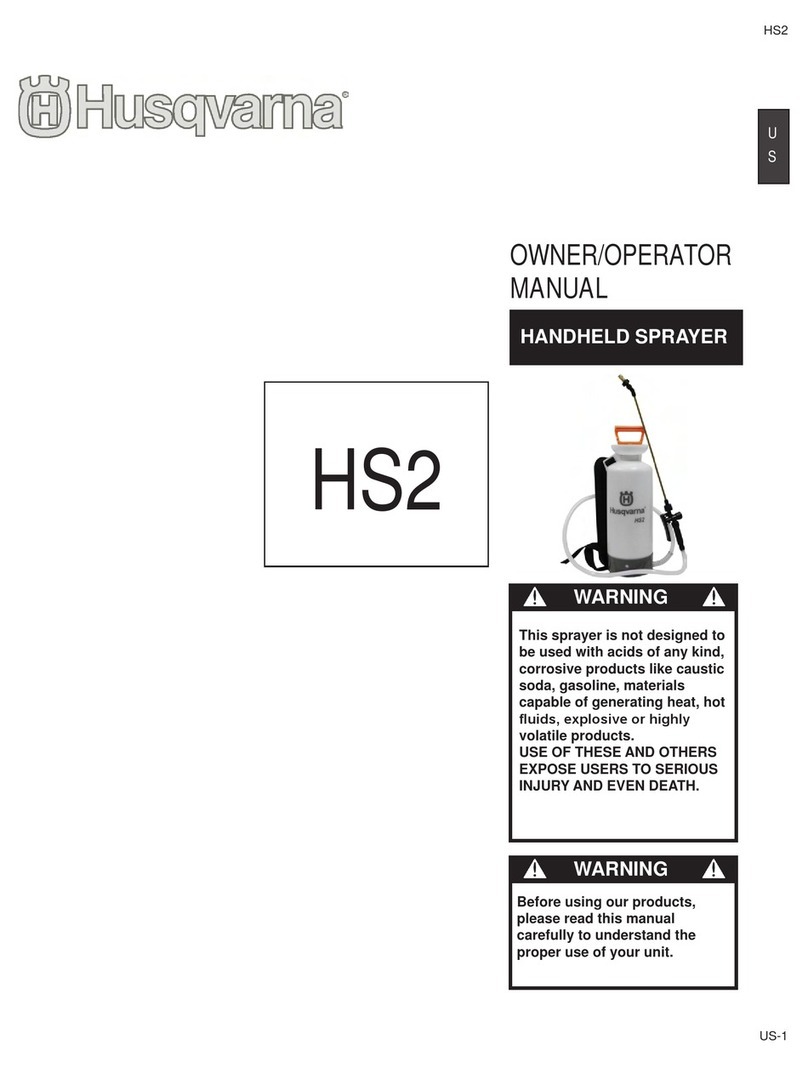
English - 7
Safety Precautions
PRECAUTION WHEN STARTING THE
ENGINE
• Keep children, animals, etc. well away when
starting the engine and spraying.
• Check if the adjust lever (outlet valve open/close
lever) is in full close position. Otherwise, large
volumes of chemicals will spout immediately
when the engine starts and are dangerous.
• Assure that there is no person in front of the
spray head (output nozzle) when starting the
engine. Remaining chemicals stuck in the spray
pipe may spout out.
PRECAUTIONS WHEN SPRAYING
• Since protective clothing generally offers
poor ventilation and thus places stress
on the body, there is a risk of contracting
heatstroke or other illness when operating for
long periods under high temperatures. Avoid
spraying on hot days, aiming instead for
early morning and late afternoon times when
temperatures are relatively cool and winds
are low.
• When starting work, pay all due consideration
to the spraying time, wind direction, etc., to
ensure that no noise disturbance or chemical
hazard is caused to nearby residents,
passers-by, farm crops, and so on.
• While spraying hold the grip rmly at all times
and be careful not to point the nozzle in the
direction of people or animals.
• While spraying be careful of the wind
direction and always stand on the upwind
side, to avoid spraying yourself with
chemicals.
• Should you begin to feel even slightly unwell
while spraying, consult a doctor immediately.
When doing so, inform the doctor of the
name of the chemical you were using, the
conditions of use, etc.
• If the sprayer is tilted the chemical may leak
out through the air holes in the cap. When
spraying always make sure you have a rm
footing and maintain your balance.
• Do not touch the spark plugs or plug cords
while the engine is running, as you may get
an electric shock.
• Do not touch the mufer, spark plugs, or
other metal parts with your bare hands while
the engine is running or immediately after
stopping the engine, as there is the risk of
burns due to high temperatures.
PRECAUTIONS AFTER SPRAYING
• Seal unused chemicals and store them out of
the reach of children.
• Do not simply discard empty chemical
containers, but dispose of them safely by
incinerating, burying, or another similar
method. In addition, take every care that the
water used to clean spraying tools does not
create any hazard.
• Fully inspect and maintain protective clothing,
masks, gloves, and other protective gear in
preparation for the next session.
• After completing the work and tidying away
chemicals and spraying tools, you should
immediately take a bath or wash your hands,
feet, face, etc. thoroughly with soap, as well
as washing your mouth out.
• You should change all clothes worn, including
underwear, and wash them thoroughly.
Clothes worn during spraying should not be
worn again the following day.
• After spraying, limit your alcohol intake and
rest thoroughly by going to bed early. If you
feel even slightly unwell, see a doctor as
soon as possible.
OTHER PRECAUTIONS
• When engaged in spraying work over a
protracted period of time, have your health
checked regularly.
• Carry out spraying in a planned fashion,
keeping a daily record of the date and time of
spraying, the chemicals used, the target pest,
contents of the work, duration of the work,
and other details.
• Keep the following points in mind when
selecting or using protective gear.
a) Protective clothing
Choose clothing that is cool to wear and
offers good ventilation and waterproong. In
addition, wear items that enable you to carry
out spraying work in total comfort and safety.
b) Spraying hood
Use a hood with a brim that is waterproof and
covers your neck and shoulders.
H1152413-26,362D28,GB.indd 7 2009-10-15 15.58







































